Click-Clock
Explore the scientific concepts of gear mechanisms, measuring time, calibrating scales and investigating momentum.

Connect
(5-10 Minutes)
Jack and Jill have been watching the Olympics on the TV and have become quite keen on finding out what it takes to beat Olympic records. They go out in the garden and decide to race 3 times around the old oak tree on the lawn.
Jill is the first to go and Jack says: ‘Ready, Set, Go!’ He presses the stopwatch in his hand at the exact time of saying “Go”! Unfortunately, in his excitement, Jack presses too hard and the stopwatch breaks.
How are they now going to time the race around the oak tree?
How can we make a timer that can help us time races?
Let’s find out!
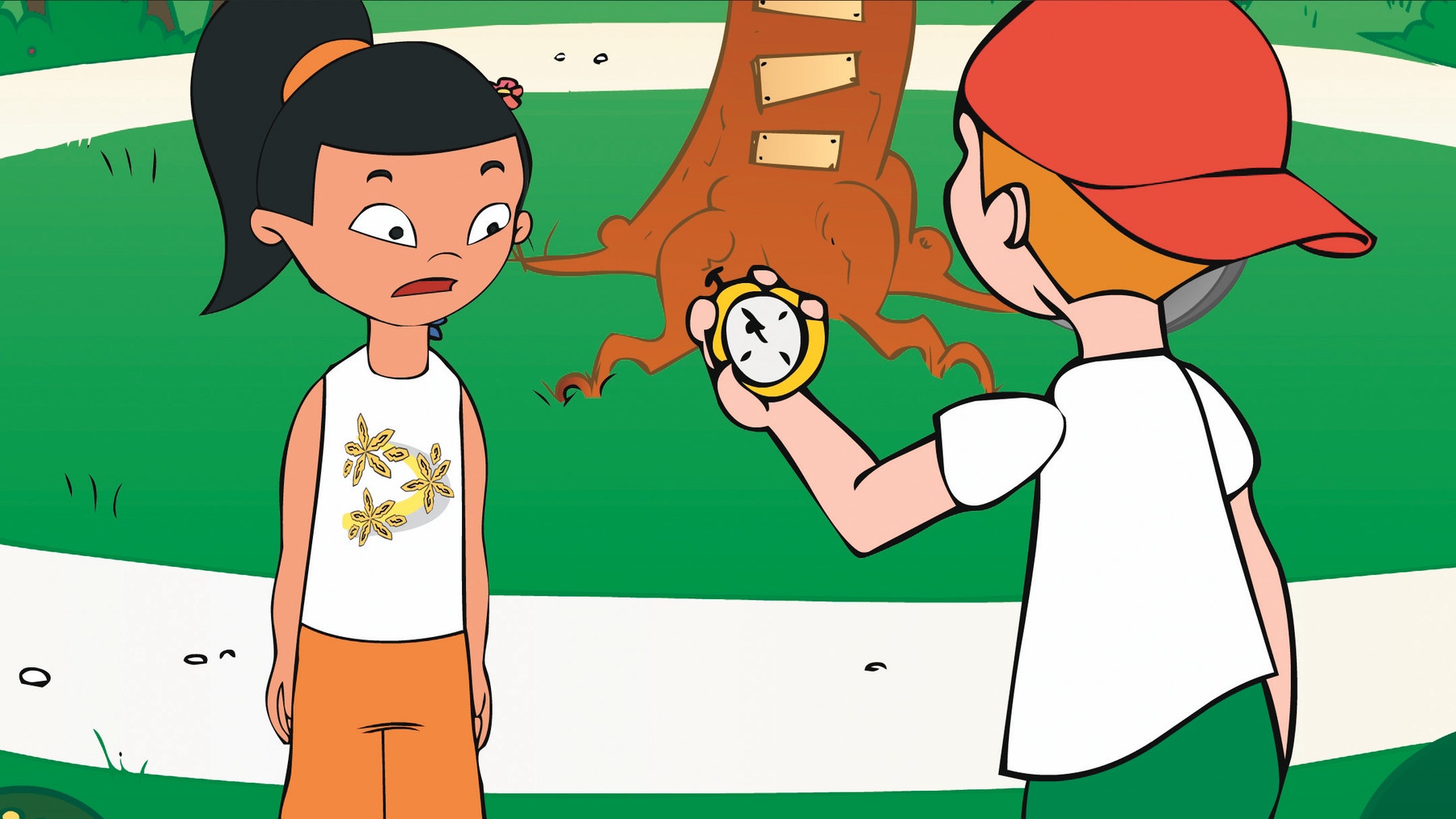
Construct
(20-25 Minutes)
Build the Click-Clock
(All of book 7A and book 7B to page 17, step 26).

Release the pawl stopping the top axle, extend the gear wheels and use the handle to wind up the counterweight. Reposition the gear wheels, reset the pawl and start the pendulum swinging.
What happens?
The click-clock starts to tick.
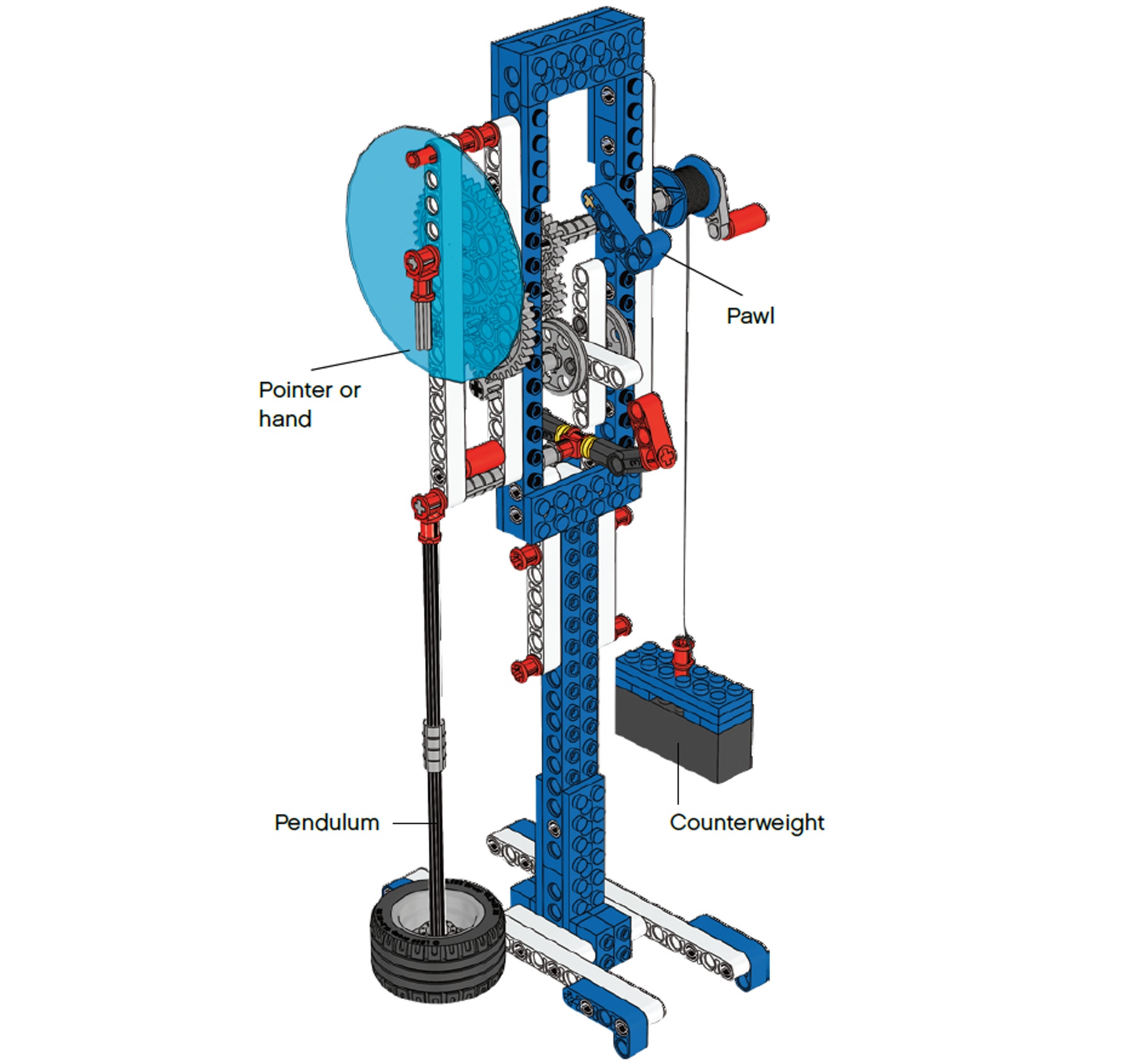
Contemplate
(20-25 minutes)
Making time go slower or faster!
First predict, then test.
A. Make sure the big wheel is at its lowest position. How many seconds does it take for the pointer to go around the dial once?
It takes approximately 70 seconds.

B. Slide the big wheel high up on the axle, set the pendulum swinging, and try timing it again.
The clock ticks even faster. The pointer rotates in approximately 55 seconds.

C. Change the pendulum to a small wheel as shown on page 18, step 27. How many seconds does it now take for the pointer to go around the dial once?
It takes approximately 56 seconds. It is faster than the same position with a big wheel because a small wheel weighs less and needs less energy to make the pendulum move back and forth.
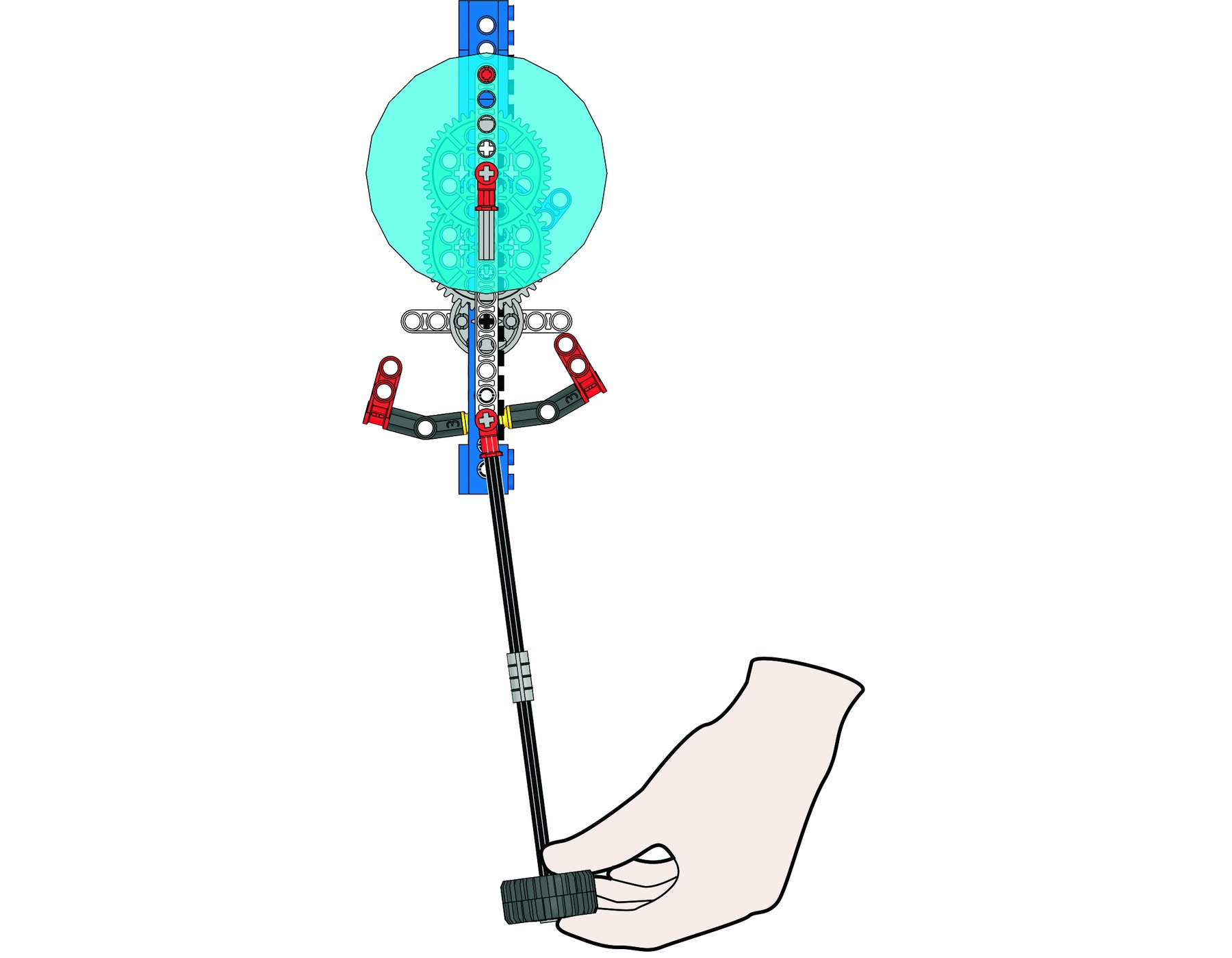
Calibrating to 1 Minute
It is possible to calibrate to almost 1 minute.
Move the small wheel up and down the pendulum until you find a position where the pointer goes around the dial in approximately 60 seconds.
Tip:
You can get close to 1 minute by positioning the wheel approximately 3 cm (approximately 1.18 in.) up the pendulum.
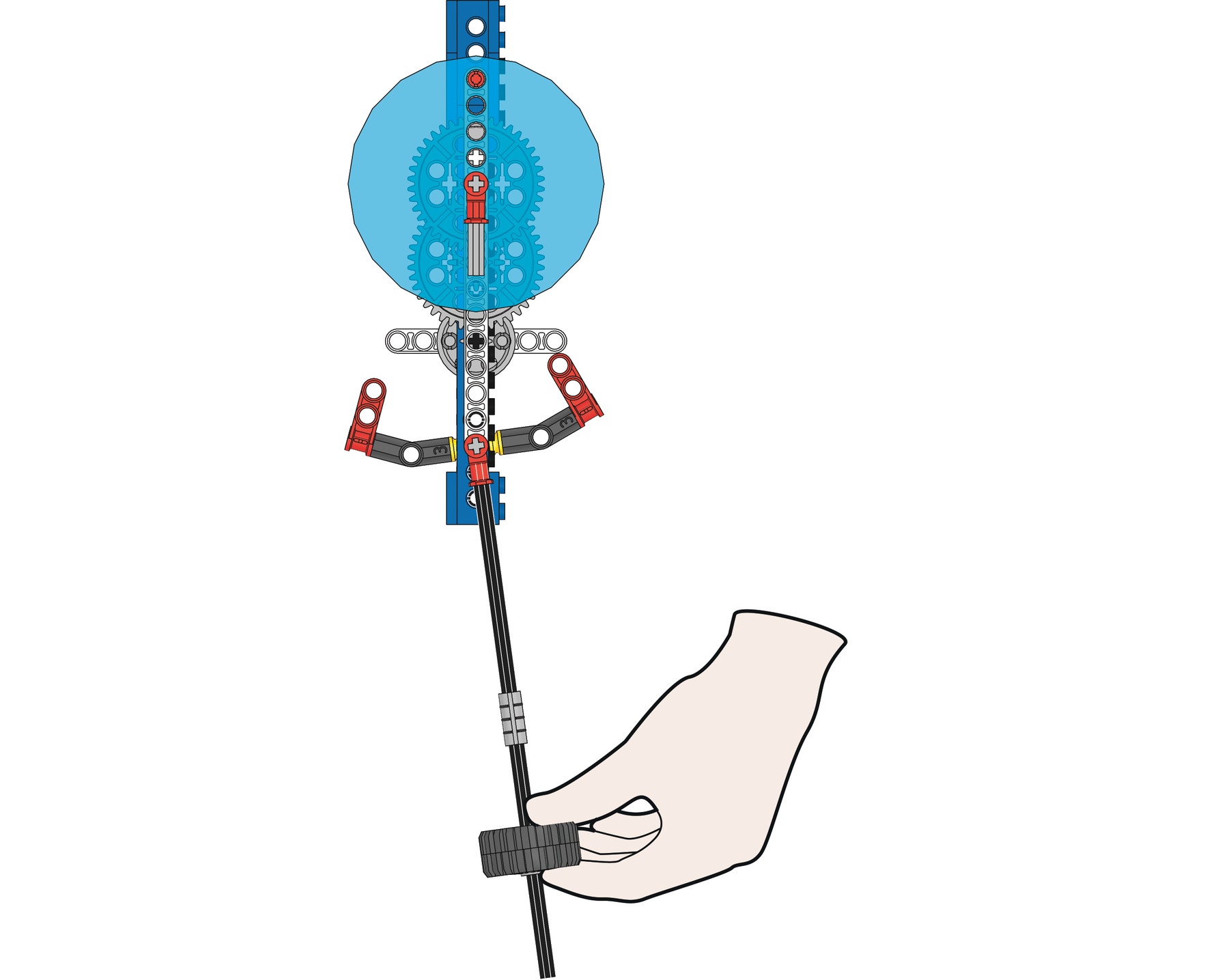
Continue
(25-30 Minutes)
Long Pendulum
(Build book 7B to page 20, step 3.)
How about finding out what happens when the pendulum is made much longer?
Place the click-clock at the edge of a table. Hold the base to keep it steady. What happens?
The click-clock runs much slower. The pendulum swings more slowly which means that you can now time much more than a minute because a longer and heavier pendulum needs more energy and takes more time to swing back and forth.
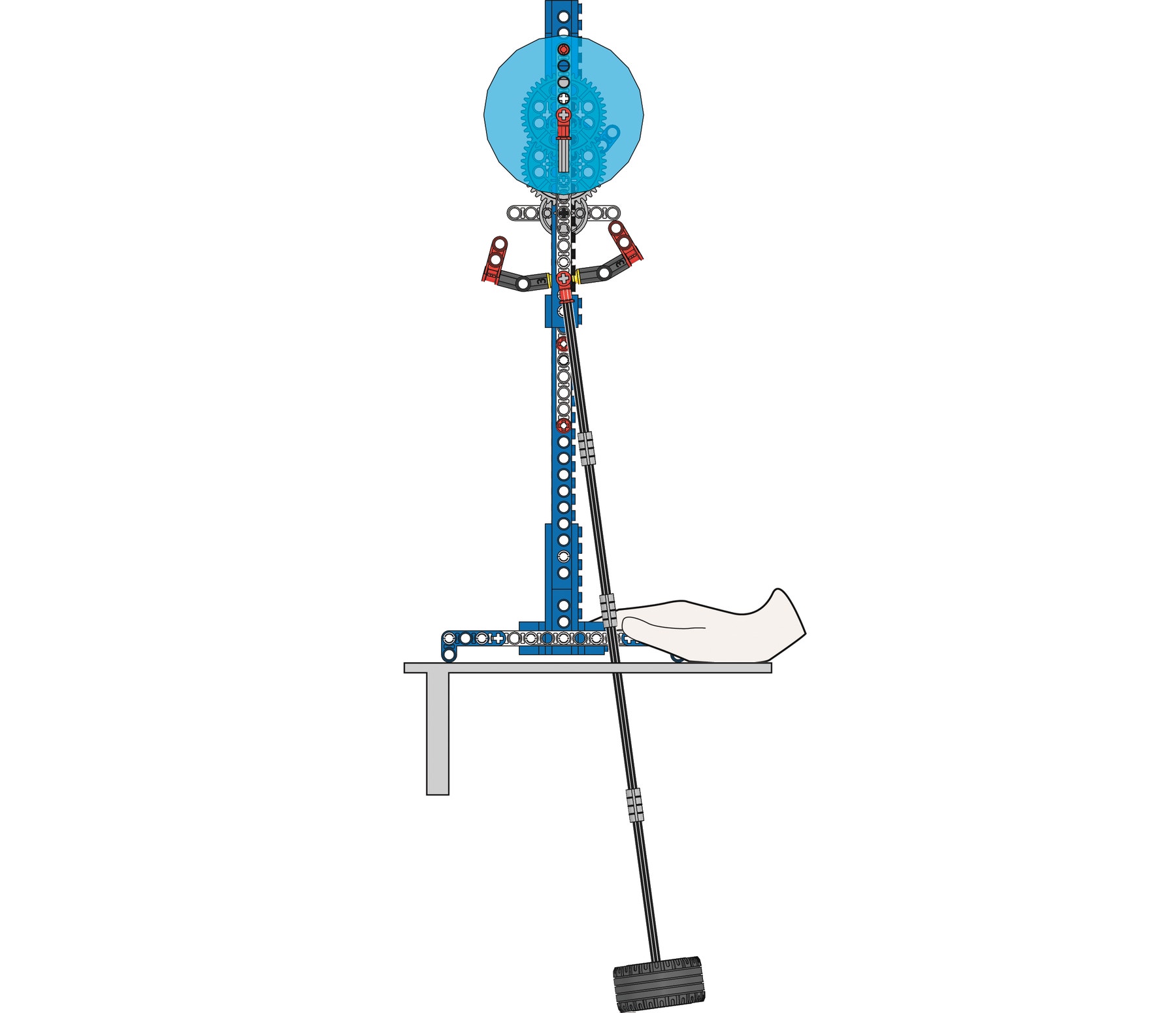
Teacher Support
Students will explore the concepts of:
Mechanisms – gears
Testing before making improvements
Measuring time
Calibrating scales
Investigating momentum
Energy
Scientific investigation
9686 Simple & Powered Machines Set (two students per set recommended)
Stopwatch or timer
NGSS
Crosscutting Concepts
Scale, proportion, and quantity
Science and Engineering Practices
Developing and using models
Planning and carrying out investigations
Obtaining, evaluating, and communicating information
Common Core Mathematics Standards
7.RP.A / 6.NS.B / 6.EE.C / 7.EE.B / 8.EE.B / 8.F.B / 6.SP.A
Common Core English Language Arts
SL 6.1 / 6.2 / 7.1 / 7.4 / 8.1
RST 6-8.3 / 6-8.4 / 6-8.7
WHST 6-8.1 / 6-8.7 / 6-8.8 / 6-8.9
Student Material
Share with:
 Google Classroom
Google Classroom